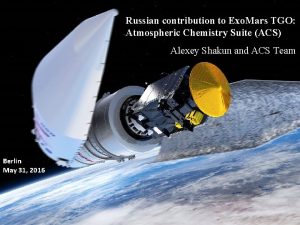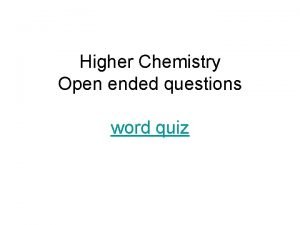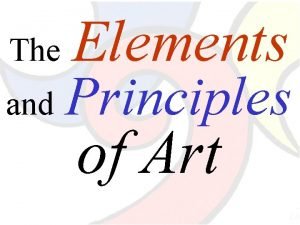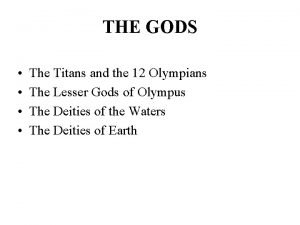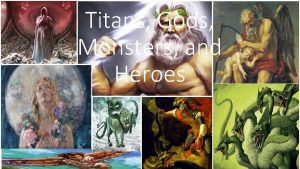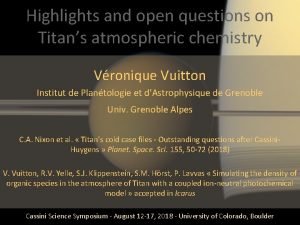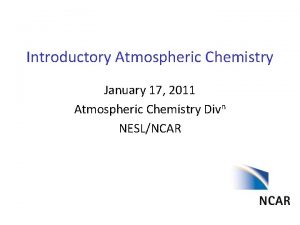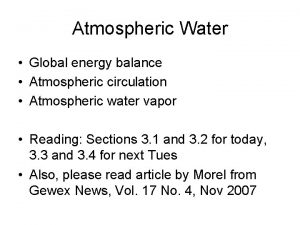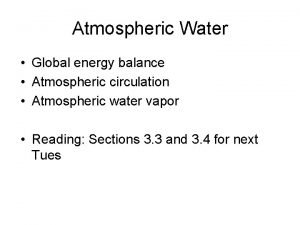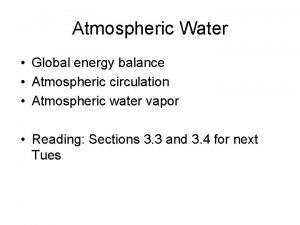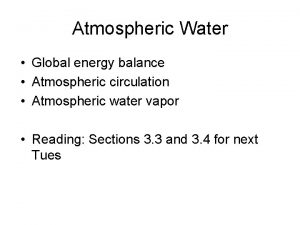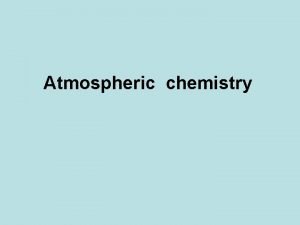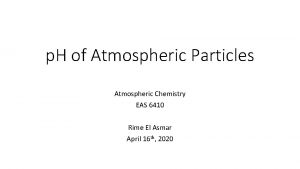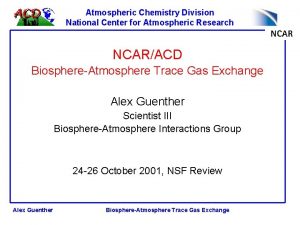Highlights and open questions on Titans atmospheric chemistry













- Slides: 13

Highlights and open questions on Titan’s atmospheric chemistry Véronique Vuitton Institut de Planétologie et d’Astrophysique de Grenoble Univ. Grenoble Alpes C. A. Nixon et al. « Titan’s cold case files - Outstanding questions after Cassini. Huygens » Planet. Space. Sci. 155, 50 -72 (2018) V. Vuitton, R. V. Yelle, S. J. Klippenstein, S. M. Hörst, P. Lavvas « Simulating the density of organic species in the atmosphere of Titan with a coupled ion-neutral photochemical model » accepted in Icarus Cassini Science Symposium - August 12 -17, 2018 - University of Colorado, Boulder

N 2 Nx + CH 4 CHx Cx. Hy. Nz+ H 2 es - + (ke. V) Cx. Hy. Nz- N CHx E U V F U V O+ (Me. V) H+ (Me. V) C x Hy N z organic haze clouds C x Hy N z + N U V cos mic rays (Te. V)

Detection of numerous positive ions Cravens et al. , GRL (2006) 1027 -1200 km (× 100) 1200 -1400 km (× 10) 1400 -1600 km (× 1) • Concentration at the ppm level • Unit mass resolution m/z 28: N 2+, C 2 H 4+, HCNH+, CO+ Ø Necessity of numerical models to interpret the data

Identification of ions and main reactions Vuitton et al. , Ap. J (2006), Icarus (2007) INMS at ∼ 1100 km Photochemical model CH 4 N 2 EUV CHx+ CH 4 Cx. Hy H+ Cx. Hy. N e. T Cx. Hy + Cx’Hy’ Indirect but most sensitive way to detect neutral species: C 6 H 6, NH 3, CH 2 NH, C 2 H 3 CN, C 2 H 5 CN … Source of neutral species: C 6 H 6, NH 3, HNC … Nx+ Cx. Hy. NH+ e. T Cx. Hy. N + Cx’Hy’

Total electron/ion densities Sagnieres et al. , JGR (2015); Vigren et al. , Icarus (2013, 2015), Ap. J (2016) Vuitton et al. , accepted in Icarus Why is there a factor of 2 -3 disagreement between the observed and modeled positive ion (and electron) densities on the dayside?

Identification of anions and main processes Vuitton et al. PSS (2009) Dominant production processes: dissociative electron attachment es- + CH 4 H- + CH 3 proton transfer H- + HCN CN- + H 2 CN(26) C 3 N-/C 4 H(50/49) C 5 N(74) Why is the total integrated density /100 of observations? Are we missing a source of light ions? Is the efficiency of the CAPS MCPs underestimated?

Macromolecules in thermosphere Coates et al. , GRL (2007); Crary et al. , PSS (2009) Positive and negative ions extending up to m/z = 103 and 104 u, respectively Ø resolution too low to interpret the data Ø chemical models not suitable for m/z > 100 What is the chemical nature of the macromolecules? Are they nitrogen rich and resemble HCN polymers? Do they contain polyaromatic and/or heterocyclic subunits?

Formation of aerosols Lavvas et al. Ap. J (2011), PNAS (2013) electrons low mass anions high mass anions cations What are the processes responsible for the growth of aerosols? What are the relative contributions of ion-neutral vs. radical reaction pathways?

Neutral hydrocarbons & nitriles Waite et al. , Science (2005); Bézard, Phil Trans R Soc (2009) Detection of one new neutral species: C 3 H 6 Complete vertical profiles for several species: C 2 H 2, C 2 H 4, C 4 H 2, C 6 H 6, HCN, HC 3 N

Comparison with observations Vuitton et al. , accepted in Icarus

Heterogeneous chemistry? Vuitton et al. , accepted in Icarus Detection of new neutral species by Herschel and ALMA: HNC, C 2 H 3 CN, C 2 H 5 CN Mixed success for the models How do neutral (and ion) species interact with the photochemical haze and various condensates in the lower atmosphere?

What about oxygen-bearing species? Hörst et al. JGR (2008) 1 -D steady state models cannot reproduce all 3 species detected in the atmosphere What is the nature, intensity and time variability of the source(s) of oxygen in the atmosphere? Can biological precursors such as amino acids and nucleotide bases or other chemical species with some prebiotic potential be synthesized in the atmosphere? O+* + N 2 O(3 P) + N 2+

Conclusions • Overall, models do a good job at reproducing observed ion and neutral densities suggesting a proper understanding of the atmospheric chemistry • Amongst the newly discovered species, the chemistry of C 3 H 6, HNC and C 2 H 3 CN is well understood but C 2 H 5 CN remains a challenge • The emphasis is now on spatial and temporal variations, which requires (i) analysis of the entire observational datasets (INMS, UVIS), (ii) development of multi-dimensional models • Detection of more 15 N and 18 O bearing species would provide some constrains on the origin and evolution of Titan’s nitrogen and oxygen inventory • Laboratory simulation experiments are the only way to comprehend the formation processes and the composition of complex organic matter • A very high resolution mass spectrometer will be the instrument of choice for any future mission to Titan
 Atmospheric chemistry suite
Atmospheric chemistry suite Atmospheric chemistry lecture notes
Atmospheric chemistry lecture notes Open innovation open science open to the world
Open innovation open science open to the world Higher chemistry questions
Higher chemistry questions Key highlight icon
Key highlight icon Proposal highlights
Proposal highlights Highlights memorandum
Highlights memorandum Investment highlights
Investment highlights Highlights from the book of isaiah
Highlights from the book of isaiah Highlights from the book of isaiah
Highlights from the book of isaiah Work immersion plan sample
Work immersion plan sample The passage highlights……
The passage highlights…… What is principles of arts
What is principles of arts 12 titan gods
12 titan gods
